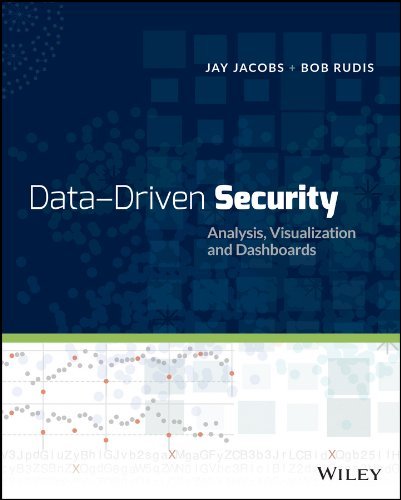If you haven’t viewed/read Wendy Nather’s (@451Wendy) insightful [Living Below The Security Poverty Line](https://451research.com/t1r-insight-living-below-the-security-poverty-line) you really need to do that before continuing (we’ll still be here when you get back).
Unfortunately, the catalyst for this post came from two recent, real-world events: my returned exposure to the apparent ever-increasing homeless issue in San Francisco (a side effect of choosing a hotel 10 blocks away from Moscone) and the hacking of a [small, local establishment](http://www.tnhonline.com/works-bakery-customers-targeted-by-cyber-thieves-1.2988390#.UTMuF-tASS0) resulting in exposure of customer credit cards.
If you do any mom-and-pop, brick-and-mortar shopping you’ve seen it: the Windows-based point-of-sale terminal that is the *only* computer for the owners. Your credit card will be scanned on the same machine cat videos will be viewed and e-mail will be read. In many small shops, that machine is also where accounting functions are performed.
These truly small business (TSB) owners aren’t living below the security poverty line, they are security hobos. They *kinda* know they need to care about the safety of their data, but their focus is on their business or creative processes. When they do have time to care about security, that part of their world is so complex that it’s far too easy to make the choice to ignore it than to do something about it. If your immediate reaction was to disagree with my complexity posit, here are just a few tasks a TSB owner must face in a world of modern commerce:
– Updating operating system patches
– Updating browser software
– Updating Flash
– Updating Java
– Maintain web site/Twitter/Facebook securely
– Recognizing phishing e-mails/posts/tweets
– Understanding browser security
– Keeping signature anti-malware up-to-date
– Remember passwords for system, POS vendor, government sites, e-mail, etc.
– Maintain secure Wi-Fi and Internet firewall
– Maintain physical security (e.g. cameras)
Those tasks may be as autonomous as breathing for security folk and technically-savvy users, but they are extraneous tasks that are confusing for most TSBs and may often cause instability issues with the wretched POS software options out in the marketplace. These folks also cannot afford to hire security consultants to do this work for them.
Verizon’s 2012 DBIR & Trustwave’s 2012 report both showed that [these types of businesses](http://www.slate.com/articles/technology/technology/2012/03/verizon_s_data_breach_investigations_report_reveals_that_restaurants_are_the_easiest_target_for_hackers_.single.html#pagebreak_anchor_2) were part of the groups most targeted by criminals, yet the best our industry can do is dress up folks in schoolgirl costumes at @RSAConference whilst telling TSBs to keep their systems up-to-date and not re-use passwords. It’s the security equivalent of walking by a truly desperate person on the street without even making eye contact as your body language exudes the “get a job” vibe.
We have to do better than this.
Until software and hardware vendors start to—or are forced to—actually care about security, it will be up to security professionals to create the digital equivalent of a soup kitchen to make the situation better. What can you do?
– speak at local Chamber of Commerce meetings and provide practical take-aways for those who attend
– discuss security topics with friends or relatives who are TSB owners
– have your [ISSA|ISC2|NAISG] chapter setup a booth at conventions which attract TSBs (y’know…get out of the echo chamber, mebbe?)
– raise awareness through blogging and other media outlets
– produce & distribute awareness materials—a great example would be @Veracode’s non-domain [infographics](http://www.veracode.com/blog/category/infographics/)
– demand better (in general) out of your security vendors
– lobby government for better security standards
It may not seem like much, but we have to start somewhere if we’re going to find a way to help protect those that most vulnerable, especially since it will also mean helping to keep *our own* information safe.
In case you are a truly small business owner who is reading this post, there are some things you can do to help ensure you won’t be a victim:
– Use a dedicated machine for your POS work—an iPad with [Square](https://squareup.com/) is a good option but doesn’t work for everyone
– Do not perform any operations on the Internet on the system that you do accounting tasks on
– Use @1Password to create, store & manage all your passwords on all your systems/devices
– Use [Secunia PSI](http://secunia.com/vulnerability_scanning/personal/) to help keep your Windows systems up-to-date
– Set all operating system and anti-malware software to auto-update
– Do not put your security cameras on the Internet; if you do, password protect them
– Research what your responsibilities are and what actions you’ll need to take in the event you do discover that your business or customer information has been exposed

There needs to be a feedback loop connecting these TSBs and the fraud cost. Frankly, thanks to Reg E, I barely care about how dicey a setup a merchant has. I will not (directly, anyway) bear the cost if my CCN is lifted, and since I have a no-fee card I never carry a balance on, even if the fees are insane, they don’t hit me.
I’m not sure what that feedback loop should be, but without it, nothing will change. The iPad+Square pattern is a good one. There’s probably some serious bank to be made setting up a “point of sale Roku” with a drool-proof interface, auto-updating image, and Stripe integration as well, but some TSBs may be locked in to using a particular payment processor (IDK much about this aspect, but franchisees may be trapped?)
Pingback: Trustifier Webworld – Security D’oh-No: Does Retail Deserve a Black-eye?
Pingback: Cyber Security: Time to Help the Little Guys (SMBs)